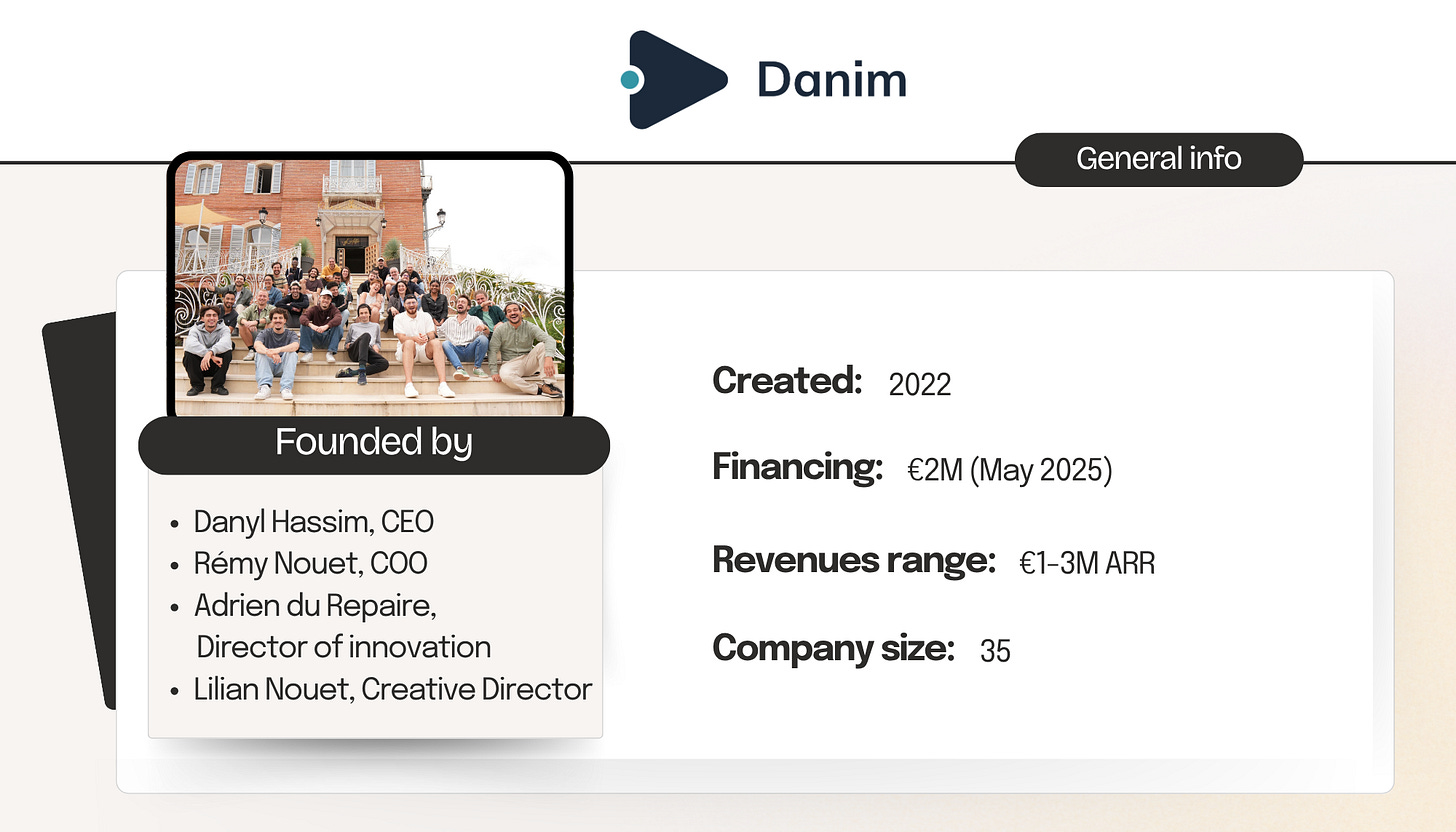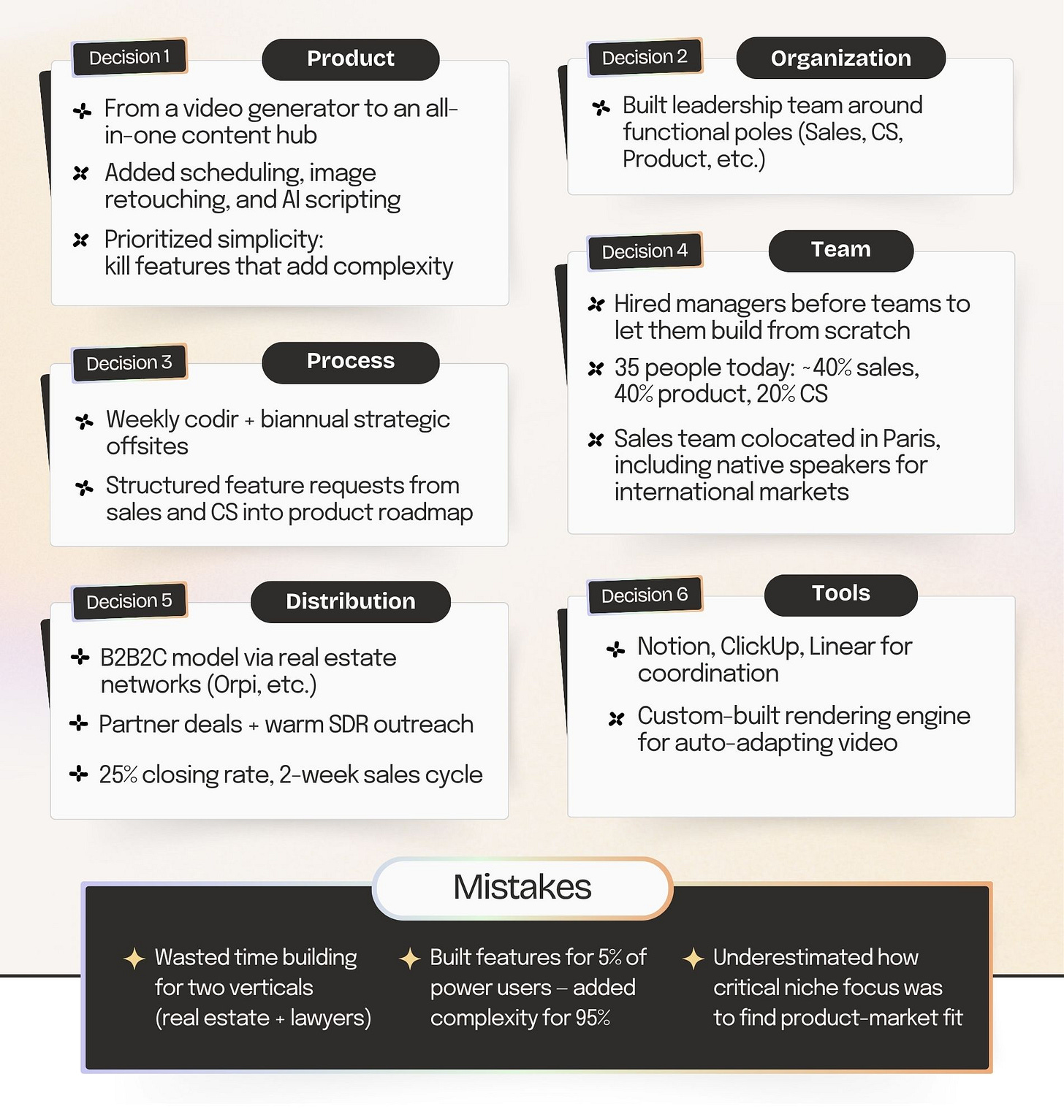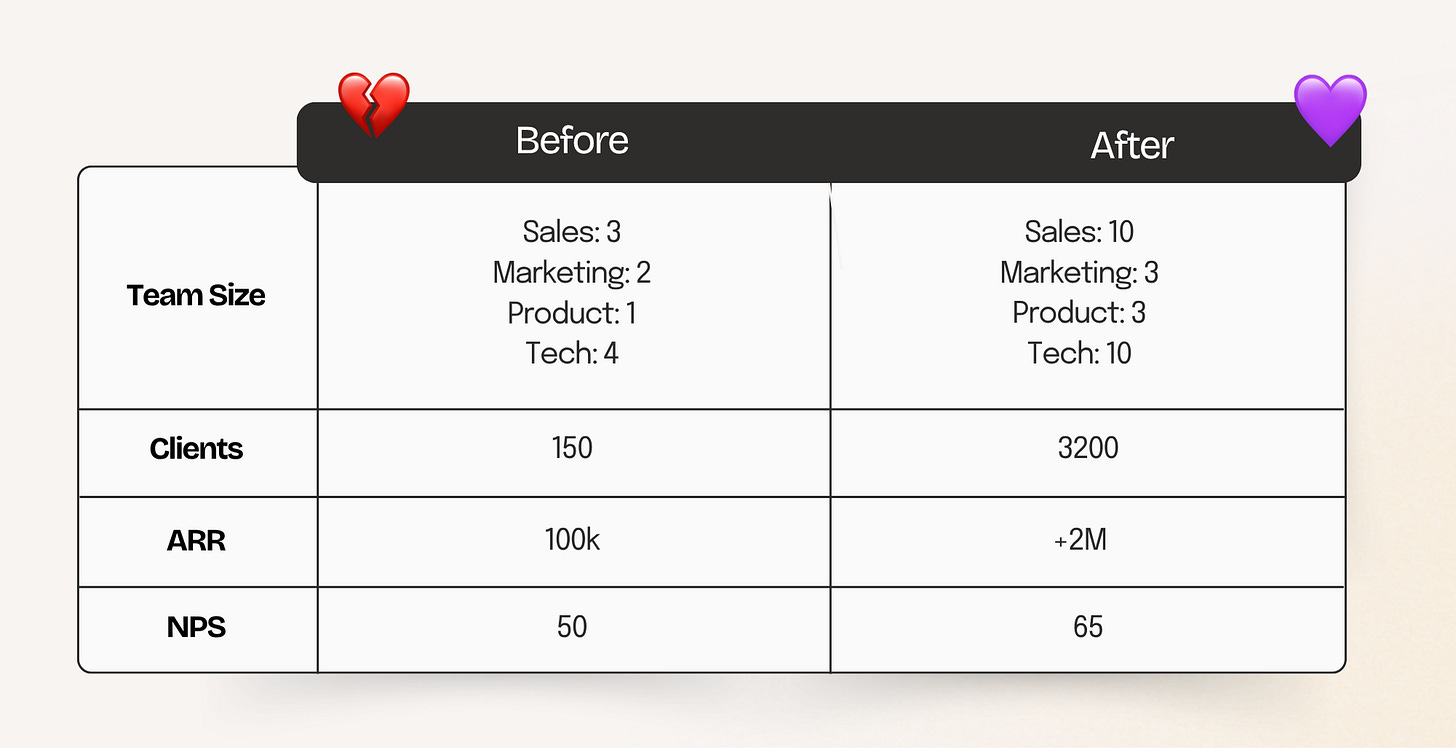Hey, I’m Timothe, cofounder of Stellar & based in Paris.
I’ve spent the past years helping 500+ startups in Europe build better product orgs and strategies. Now I’m sharing what I’ve learned (and keep learning) in How They Build.
🔍 TL;DR
Company: Danim (Video creation for real estate)
Challenge: No clear market positioning
Solution: Focus exclusively on real estate agents
Impact: 100x client base in 20 months
Takeaway: Deep niche focus accelerates product-market fit
Context
Today, I’m breaking down Danim and how to escape early-stage product ambiguity by going all-in on one niche vertical, with key takeaways you can start applying tomorrow. Let’s dive in!
Product 101 for Executives
B2B2C model: A company sells to another business, which then sells to the final consumer.
Rendering engine: The software that turns code into what you see on screen (text, images, layout).
Power users: Very active and advanced users who know the product well and often push it to its limits.
Marquee customer: A well-known or prestigious client that gives a company credibility and visibility.
Disclaimer: The organizational choices and technical solutions shared in this newsletter aren’t meant to be copied and pasted as-is. Always keep your company’s context in mind before adopting something that works elsewhere! 😊The Company
Danim is an all-in-one digital content creation platform designed specifically for real estate professionals. It empowers agents and agencies to create, publish, and track performance of branded video and social content in minutes — without any technical skills.
🥵 Their challenge : Market Focus
Danim faced the classic early-stage SaaS trap: a strong tech with no clear target market. This issue led to:
Disparate, unfocused client base
Low retention from non-recurring use cases
Complex product roadmap with no core audience
😢 How the Problem Affected Danim’s Performance
Weak sales conversion
Inability to scale
Diffuse feature demand
💡 Their idea to solve the problem
To address this challenge, the team dropped all other verticals and rebuilt the company around one persona: real estate agents. They created templates for real estate use cases, ran experiments, and rebranded Danim as “a communication agency in your pocket” for realtors.
🤷🏼♂️ Why would it work
Real estate has recurring content needs — listings, testimonials, updates — that perfectly suit video templates.
✅ Their decisions to make it work
🍾 The results
To scale a startup by focusing on one niche market:
Win a marquee customer in your niche early
Before scaling, secure a marquee customer that validates your product and gives you credibility within your niche. A marquee customer not only serves as a proof point but also helps you refine your product for the niche and creates a ripple effect of trust within the market. For example, in the early days of Linear, landing big-name clients in their niche helped them build momentum and attract others in the same space (episode coming soon).Create a hyper-targeted referral program tailored to your niche
Referral programs are often overlooked in niche markets, but they can be incredibly powerful when designed specifically for your audience. The key is to align the incentive with what your niche values most, whether that’s financial rewards, exclusive perks, or recognition within the community. This approach not only drives growth but also deepens loyalty within your niche.Leverage niche-specific communities for organic growth
Instead of broad marketing, embed yourself in the communities where your niche hangs out. This could be forums, Slack groups, subreddits, or even offline meetups. For example, in the early days of Airbnb, the team went to events and conferences where their target audience (budget-conscious travelers and hosts) gathered, building trust and awareness directly within the community. By becoming a trusted member of these spaces, you can generate organic word-of-mouth and build a strong foundation of early adopters.
My full interview with Danim’s CEO
Dive deeper into this topic with Danyl Hassim, CEO of Danim, in my latest podcast episode:
Enjoyed this newsletter? Share it with your network using the button below—your support means a lot!








